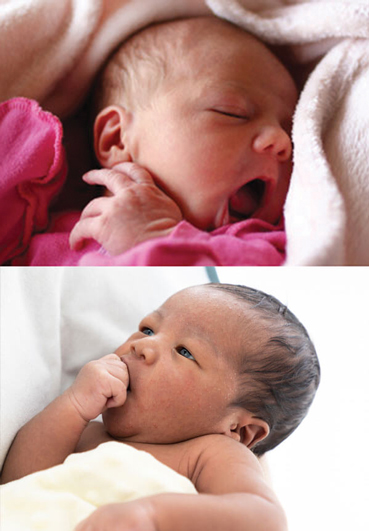Ihnak lei Lungfiannak
Na fate cu ih ter dingah a fekmi aa remmi ah, thil dang a um lomi paoh ah, an keng lei in chia. Bawhte pawl cu a hmasat ah tlawmpal te an i hngilh, cu hnu ah minit 20 hrawng thu hluahmah in an i hngilh.
- Fawi tein thangh
- A cawl i aw thang piin a chuah
- Mit voi tampi a theh
- Mang a manh
- Thluak a than i a thangcho
- Fawi tein aa thangh lo
- A siarem i a kut le ke a samh
- A cawl tuk lo
- Thluak aa din
- Na fate na ih ter hlan ah thuk piin aa hngilhnak hmelchunhnak pawl hngak ta hna. I chinchiah, bawhte pawl cu thu hluahmah in i hngilh dingah minit 20 tluk a rau.

Hmelchunhnak Pawl Lungfiannak
Na naute nih a herh micu holh loin hmelchunhnak hmang in an chimh khawh. An hmelchunhnak lehnak nih na naute cu ngam dingcaah le i nuam dingcaah a bawmh khawh.

- “Ka Paw A Tam” Hmelchunhnak
- Kaa pawng ah kut chiah
- Kut le ke ngawiter
- Thang pini dawpnak tuah
- Hmur cipter
- Hnuk par (a hram) kawl
A paw a tam tuk hlan ah, atu hnuk dinhnak caan asi.
- “Pakhat khat aa thlengmi ka duh” timi Hmelchunhnak
- Zoh asilole mer asilole keng depter
- Mithmai chiah asilole mit thep loin au
- Kut, ban asilole ke fek tein umter
- Haham asilole mitkut
Hi nih a chim duh mi cu an sia a rem lo asiloah pakhat khat nih hna a hnawh tinak asi. I mer ter asilole din ter ko. Hnachehnak, ceunak, asiloah mi tam tuknak cu naute caah tha batnak asi kho.
- “Ka Paw A Khim” timi Hmelchunhnak
- Nuar deuh in a dawp asilole a dawpmi a ngol
- Kut le ban kha siarem tein a chiah
- Hnuk par in adang lei a hoih
- A hlatnak ah nam
- Mit kut
Hi hmelchunhnak nih a chim duh micu ei ngol ding ah timhcia an si cang tinak asi.
- “Na pawng um ka duh” timi Hmelchunhnak
- Hmai le takpum kha siarem tein a um
- Na aw le hmai kha an zulh
- Nangmah an banh
- Na hmai kha dengteo in an zoh
- A lu a tun
Hi nih a chim duh micu nangmah he i chawnbiak dingah, cawn dingah, asiloah lente i celh dingah timhcia an si cang timi asi!

A Tapmi Lungfiannak
Nu le pa caah an naute a tah tikah cucu lungnuamlonak taktak asi kho. A caancaan ahcun naute vialte hi an tap dih. Naute an tahnak a ruang tampi a um, an paw a tam ruang le asiloah diaper thlen an duh ruang lawngah asi lo. Na fate a tuarnak nemter deuh dingcaah na tuah khawhmi thil tampi a um.
- Lungdai tein um law lungsau tein um.
- Na fa nih zeidah an chim timi hngalhnak zuam dingah na fa nih hmelchunhnak a langhtermi pawl kha hmang.
- Na fa kha naih tein le rek tein tlai:
- Cuar-in-cuar.
- Din tein holh asilole hlasa lengmang.
- Na fa kha din tein hler asilole thui lengmang.
- A keng, a kut le ke kha din tein hmehpiak.
- Thinhun asilole tahhamang hram na thawk ahcun, ngakchia ah a himnak hmun ah chia law i din.
- Na fa kha a tap tuk tiaar na ruah ahcun na ngandaamnak lei zohkhenhtu kha pehtlaih.
Tahnak kong tamdeuh hngalhnak cash, hika ah zoh www.purplecrying.com.
Hringtu Nulepa caah Khulrang in Tuah dingmi Pawl
- An paw tamnak an theihter tikah, suimilam caan zoh loin na fate cu hnuk dinh.
- Na fate a ihnak ah mei le TV phit hna.
- Na fate aa hngilh lio ah i din (dai tein thutnak nih thadam deuhnak caah an bawmh khawh).
- Thinhun asilole tahhamang hram na thawk ahcun, ngakchia ah a himnak hmun ah chia law i din.
- Inn rian caah na hawi le asiloah chungkhar bawmh hal hna.
Na umnak pawng i Nu, Bawhte le Hngakchia (Women, Infants and Children-WIC) siikhaan kawl dingcaah 800-522-0874 hi phone chawnh asiloah kan website wic.in.gov. ah zoh. Bawhte pawl caah him tein hngilhnak kong tamdeuh hngalnak caah hika ah zoh.
Hi riantuannak zung cu aa tlukruangmi caantha petu a si.